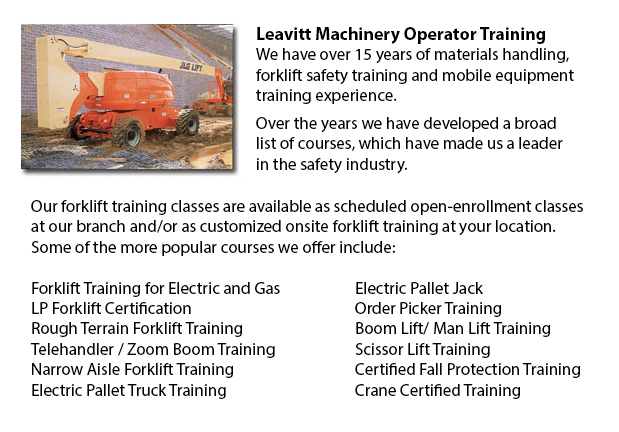
Aerial Boom Lift Ticket Vancouver - Aerial lifts can be utilized to accomplish certain unique tasks executed in hard to reach aerial places. Some of the odd jobs associated with this style of lift include performing regular repair on buildings with prominent ceilings, repairing phone and utility cables, lifting heavy shelving units, and trimming tree branches. A ladder might also be utilized for many of the aforementioned tasks, although aerial platform lifts offer more security and stability when correctly used.
There are several models of aerial platform lifts existing on the market depending on what the task needed involves. Painters often use scissor aerial hoists for example, which are categorized as mobile scaffolding, effective in painting trim and reaching the 2nd story and above on buildings. The scissor aerial lifts use criss-cross braces to stretch and enlarge upwards. There is a table attached to the top of the braces that rises simultaneously as the criss-cross braces raise.
Bucket trucks and cherry pickers are another variety of aerial hoist. They possess a bucket platform on top of an extended arm. As this arm unfolds, the attached platform rises. Lift trucks utilize a pronged arm that rises upwards as the lever is moved. Boom lift trucks have a hydraulic arm which extends outward and hoists the platform. Every one of these aerial lift trucks require special training to operate.
Through the Occupational Safety & Health Association, also called OSHA, training courses are offered to help make certain the workers satisfy occupational principles for safety, machine operation, inspection and repair and machine weight capacities. Workforce receive qualifications upon completion of the course and only OSHA certified workers should run aerial lifts. The Occupational Safety & Health Organization has developed rules to uphold safety and prevent injury when utilizing aerial platform lifts. Common sense rules such as not using this apparatus to give rides and ensuring all tires on aerial lifts are braced in order to hinder machine tipping are observed within the rules.
Regrettably, figures illustrate that in excess of 20 operators die each year while working with aerial hoists and 8% of those are commercial painters. The majority of these accidents are due to improper tire bracing and the lift falling over; therefore a lot of of these deaths had been preventable. Operators should make sure that all wheels are locked and braces as a critical security precaution to stop the machine from toppling over.
Other guidelines include marking the surrounding area of the machine in a visible way to safeguard passers-by and to ensure they do not come too close to the operating machine. It is vital to ensure that there are also 10 feet of clearance amid any electrical lines and the aerial hoist. Operators of this equipment are also highly recommended to always wear the proper security harness when up in the air.
-
Telehandler Ticket Vancouver
Telehandler Ticket Vancouver - The telescopic handler or telehandler is a frequently used equipment in agricultural and industrial applications. This equipment is similar in appearance to a forklift and also functions in a similar way, even if teleha... More -
Forklift Operator Certification Vancouver
Forklift Operator Certification Vancouver - Forklift operator certification is usually needed for employees working within industrial, warehouse or construction environments to guarantee the safe operation of forklifts. Workplace training need to fol... More -
Certified Fall Protection Training in Vancouver
There are high numbers of injuries at work linked to falling and a lot of fall-related deaths reported each and every year. The majority of these instances might have been avoided with better training, better measures in place, and by correctly equip... More -
Forklift Training Course Vancouver
Forklift Training Course Vancouver - CSA and OSHA establish criteria for forklift safety training which meets existing standards and regulations. Anyone planning to utilize a forklift is needed to successfully complete safety training prior to using... More -
Overhead Crane Certification Vancouver
Overhead Crane Certification Vancouver - The overhead crane certification course is a program that is designed to assist trainees, even if they have literacy or language restrictions. The course comprises a practical hands-on training session and a c... More -
Forklift Instructor Training Vancouver
Forklift Instructor Training Vancouver - Forklift Instructor training certification is recommended for forklift operators who would like to become instructors. To qualify for forklift instructor training, operators must be able to prove they possess... More -
Crane / Overhead Crane / Truck Mounted Crane / Hydraulic Cranes Training in Vancouver
Overhead cranes are likewise referred to as bridge cranes. They are actually a type of crane which comprises a hook and line apparatus which runs along a horizontal beam which runs along two widely separated rails. Lots of overhead cranes can be foun... More -
Scissor Lift Safety Training Vancouver
Scissor Lift Safety Training Vancouver - A scissor lift is a kind of platform lift that moves vertically. The lift table is moved in a vertical motion because of criss-cross folding supports which are linked in what is referred to as a pantograph. Th... More

Forklift Training Vancouver
TOLL FREE: 1-888-254-6157
24389 Fraser Highway
Langley, British Columbia
forklifttrainingvancouver.com
Email Us
About Us


